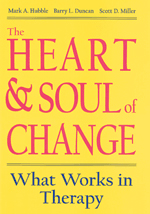FOLLOW UP TO OUR SELF-HELP VIDEOS
After practicing the protocols demonstrated in our videos, you may wish to follow up with more post-traumatic stress disorder (PTSD) self-help programs from The Traumatology Institute (Canada).
To watch a brief interview with the Institute’s CEO, Dr. Anna B. Baranowsky, play the video below, “FROM FEAR, TO LAUGHTER & SHAKE, TO HEAL PTSD”
For further information on The Traumatology Institute’s self-help programs, please click on this link to TRAUMA RECOVERY PROGRAM.
CONSIDERING THERAPY?
 The instructions in emotional tuning videos provide somatic, (body-oriented, no-talk) therapy protocols for people suffering the effects of stressful experiences.
The instructions in emotional tuning videos provide somatic, (body-oriented, no-talk) therapy protocols for people suffering the effects of stressful experiences.
Our self-help approach appeals to those distressed by talking about their memories, or believe that seeing a therapist is a stigmatizing, career-limiting option.
However, one sign of recovery from stress injuries is the ability to talk comfortably about traumatic memories. So, if you have reached this stage of energetic healing, there are literally hundreds of “talk therapies” from which to choose.
However, research shows that only 15% of therapeutic benefits relate to the differences in the type of therapy. (“The Heart & Soul of Change” – APA, 1999)
Since the quality of the therapeutic relationship accounts for 30% of the benefits achieved, It may be more important to find a therapist with whom you feel comfortable.
And don’t discount your own determination to make things better, since what clients bring to the table accounts for 40% of the benefits achieved.
So what should you expect from a therapist, whether you are involved as an individual, couple or family?
First, you should expect to be heard clearly, without being filtered through an elaborate theory of human behaviour.
You should be helped to 1) to gain clarity on what outcome you want, in simple concrete terms; 2) grasp how “the problem” affects you and others, at home and work; 3) consider how these effects fit your values, intentions, and aspirations; 4) step over the threshold to a better life experience, with revised perspectives.
TRAUMA THERAPIES
Emotional Tuning incorporates principles from the following list of therapies:
For a more more complete list of trauma therapies go to:
Soldiers, police, firemen and paramedics may wish to learn more about:
Emotional tuning videos are used by:
HEALING FACILITATORS
At “The Experiential Gathering of Healing Facilitators” in San Miguel de Allende, Mexico, a wide variety of techniques are employed, including reiki and emotional tuning.
A professional networking site for yoga therapists, laughter yoga leaders, mind-body workers and somatic/trauma therapists is the Linked In Group, “Energetic Healing Facilitators“.
A similar, but more public site is Facebook “Energetic Healing Facilitators”
To learn more about humming bird imagery and our logo below, see:
Emotional anchoring can be strengthened through Aromatherapy.
While practicing “Calming Breath”, simply apply a scent under the nostrils that you find particularly relaxing.
If you are not in immediate danger because of thoughts of suicide, but need someone to talk with about your suicidal feelings, please do not hesitate to call one of the following national suicide prevention lines:
Please help us continue to provide free, self-help videos, anonymously to people suffering post-traumatic stress disorder (PTSD) injuries. Any small donation would be appreciated.